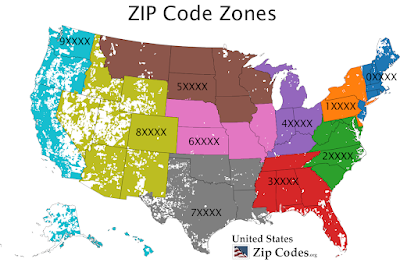Before ZIP codes, mail sorting and delivery were less systematic. As the volume of mail increased, especially with the population growth and urbanization trends in the mid-20th century, the postal system needed a more organized way to handle the large quantities of mail.
Here's how ZIP codes came about:
1. Growth in Mail Volume: In the early 1960s, the USPS was facing significant challenges in handling the increasing volume of mail. The existing system was struggling to cope with the sheer number of letters and packages being sent.
2. Efficiency Concerns: The postal service recognized the need for a more efficient system for sorting and delivering mail. Manual sorting was time-consuming and prone to errors, and there was a growing demand for a faster and more accurate method.
3. Zone Improvement Plan (ZIP) Concept: The concept of ZIP codes was developed by postal employee Robert Moon and postal inspector Elmer Sommerfield in 1944. However, it wasn't until nearly two decades later, in 1963, that the ZIP code system was officially implemented.
4. Introduction of the ZIP Code: On July 1, 1963, the ZIP code system was introduced in the United States. The country was divided into postal zones, and each zone was assigned a unique ZIP code, especially places like Corpus Christi, Port Harcourt and Boston among others. These codes consisted of five digits, and later, an extended version known as ZIP+4 was introduced, providing more precise location information.
5. Benefits of ZIP Codes: The implementation of ZIP codes brought several benefits. It significantly improved the efficiency of mail sorting and delivery, reducing the chances of misrouted mail. Automation became more feasible with the use of ZIP codes, allowing for the development of sorting machines that could read and process these codes.
6. Public Acceptance: While there was initially some resistance and skepticism about the new system, the benefits quickly became apparent. Over time, the public adapted to using ZIP codes, and it became a standard part of addressing mail in the United States.
7. Modernization and Technological Advances: As technology continued to advance, the USPS integrated more sophisticated sorting machines and systems. Today, ZIP codes play a crucial role in the automated sorting and processing of mail, ensuring that letters and packages are efficiently routed to their destinations.
In summary, ZIP codes were introduced in response to the growing challenges of handling a large volume of mail. The system aimed to improve the efficiency of mail delivery, reduce errors in sorting, and facilitate the automation of mail processing, ultimately modernizing the postal service in the United States.

